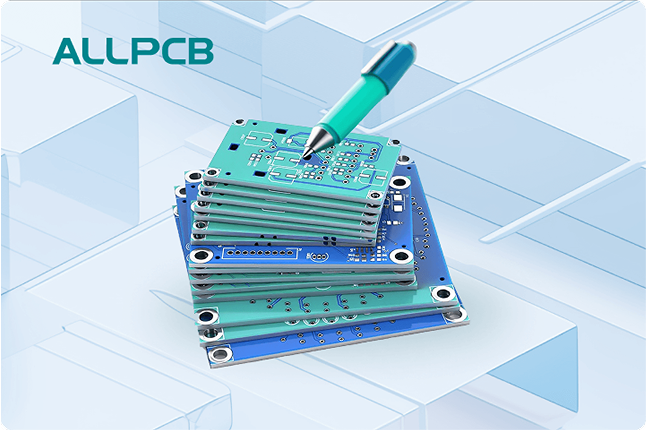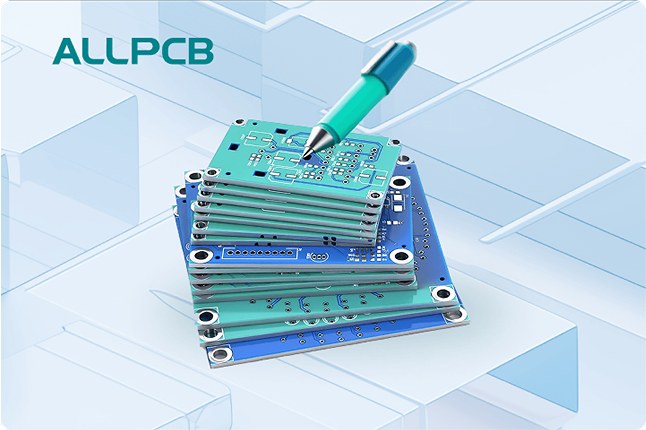If you're diving into the world of High-Density Interconnect (HDI) PCB design, you might be wondering how to optimize your layer stack for top-notch signal integrity. The answer lies in a well-thought-out HDI PCB stackup design that balances impedance control, layer arrangement, and the strategic use of power and ground planes. In this blog, we'll uncover the secrets of layer configuration to help you achieve excellent signal integrity in your HDI PCB projects. We'll break down the essentials of layer stack design and provide actionable tips to ensure your signals travel smoothly without interference or loss.
What Is HDI PCB Stackup and Why Does It Matter?
HDI PCB stackup refers to the arrangement of conductive and insulating layers in a printed circuit board designed for high-density applications. These boards often feature microvias, fine traces, and multiple layers to pack more functionality into a smaller space. But why is the stackup so critical for signal integrity? A poorly designed stackup can lead to issues like crosstalk, electromagnetic interference (EMI), and signal degradation, especially in high-speed designs where signals switch at frequencies above 100 MHz.
A well-optimized HDI PCB stackup ensures controlled impedance, minimizes noise, and provides stable power delivery through dedicated power and ground planes. This directly impacts how well your signals maintain their quality as they travel through the board. Whether you're working on a smartphone, medical device, or automotive system, getting the stackup right is the foundation of reliable performance.
The Core Elements of HDI PCB Stackup Design
Designing an HDI PCB stackup isn't just about stacking layers randomly. It involves careful planning to meet electrical and mechanical requirements. Let's explore the key elements that go into crafting a stackup for optimal signal integrity.
1. Layer Count and Arrangement
HDI PCBs often range from 6 to 20 layers or more, depending on the complexity of the design. The arrangement of these layers is crucial. Typically, signal layers are alternated with ground or power planes to reduce crosstalk and provide a return path for high-speed signals. For instance, in an 8-layer HDI PCB, a common configuration might look like this:
- Layer 1: Top Signal
- Layer 2: Ground Plane
- Layer 3: Signal
- Layer 4: Power Plane
- Layer 5: Power Plane
- Layer 6: Signal
- Layer 7: Ground Plane
- Layer 8: Bottom Signal
This setup ensures that each signal layer is adjacent to a reference plane (ground or power), which helps maintain signal integrity by providing a consistent return path and reducing loop inductance.
2. Microvias and Blind/Buried Vias
HDI PCBs use microvias (vias with diameters less than 150 microns) to connect layers in a compact space. Unlike traditional through-hole vias, microvias can be blind (connecting an outer layer to an inner layer) or buried (connecting inner layers only). This reduces signal path length and minimizes parasitic inductance, which is critical for high-speed signals above 1 GHz. Properly placing these vias in the stackup can also help avoid signal stubs that degrade performance.
3. Material Selection for Dielectric Layers
The dielectric material between layers affects signal speed and impedance. High-speed designs often use low-loss materials like Rogers or Isola with a dielectric constant (Dk) between 3.0 and 4.5 to ensure minimal signal delay and loss. The thickness of these layers also matters—thinner dielectrics (e.g., 0.1 mm) between signal and ground planes can help achieve tighter impedance control, often targeting values like 50 ohms for single-ended traces or 100 ohms for differential pairs.
Impedance Control: The Heart of Signal Integrity
Impedance control is a cornerstone of HDI PCB stackup design. Mismatched impedance can cause signal reflections, leading to data errors in high-speed circuits. To achieve controlled impedance, you need to carefully design the trace width, spacing, and dielectric thickness relative to the reference plane.
For example, a 50-ohm impedance trace on a signal layer might require a trace width of 0.1 mm and a dielectric thickness of 0.2 mm to the nearest ground plane, assuming a dielectric constant of 4.0. These values are calculated using impedance calculators or simulation tools based on the stackup configuration. Keeping power and ground planes close to signal layers also helps maintain a consistent impedance by reducing the loop area for return currents.
In HDI designs, where space is tight, achieving precise impedance often means adjusting the stackup to include thinner dielectric layers or using high-frequency laminates. This ensures signals propagate without distortion, especially for applications like DDR4 memory running at 3200 MT/s or USB 3.2 with data rates up to 10 Gbps.
Power and Ground Planes: Stabilizing Your Design
Power and ground planes are not just for delivering voltage—they play a massive role in signal integrity. In an HDI PCB stackup, these planes act as a low-impedance return path for signals, reduce EMI, and help distribute power evenly across components.
1. Dedicated Ground Planes
A continuous ground plane adjacent to signal layers is essential. It provides a reference for impedance control and minimizes crosstalk by shielding signals from interference. Splitting ground planes should be avoided unless absolutely necessary, as it can disrupt return paths and cause signal noise. For high-speed signals, ensure the ground plane is unbroken under critical traces to avoid discontinuities.
2. Power Plane Design
Power planes should be placed close to ground planes to create a natural decoupling capacitance, which helps filter noise from the power supply. For instance, in a 10-layer HDI stackup, placing a power plane on layer 4 and a ground plane on layer 5 with a thin dielectric (e.g., 0.05 mm) between them can provide capacitance in the range of 100 pF per square inch, reducing voltage fluctuations during high-speed switching.
3. Decoupling Capacitors and Placement
While not part of the stackup itself, decoupling capacitors work hand-in-hand with power and ground planes. Place these capacitors close to power pins of ICs to filter high-frequency noise. In HDI designs, where space is limited, use smaller capacitors (e.g., 0402 or 0201 sizes) and bury them in inner layers if possible to save surface space.
Strategies for Optimizing Signal Integrity in Layer Stack Design
Signal integrity is the ultimate goal of any HDI PCB stackup design. Here are some proven strategies to ensure your signals remain clean and reliable.
1. Minimize Crosstalk with Proper Layer Spacing
Crosstalk happens when signals on adjacent traces or layers interfere with each other. To reduce this, increase the spacing between signal layers or place a ground plane between them. For example, in a 12-layer HDI PCB, high-speed differential pairs on layer 3 can be shielded from signals on layer 5 by a ground plane on layer 4. This can reduce crosstalk by up to 20 dB, depending on the frequency and trace proximity.
2. Route High-Speed Signals on Inner Layers
Routing critical high-speed signals (e.g., PCIe or HDMI lines) on inner layers flanked by ground planes provides better shielding from external noise and EMI. This is especially important in HDI designs for applications like 5G modules, where signal frequencies can exceed 3 GHz.
3. Use Symmetrical Stackups for Balance
A symmetrical stackup, where layers are mirrored around the board's center, helps prevent warping during manufacturing and ensures uniform electrical performance. For instance, in a 10-layer board, if layers 1-5 are mirrored by layers 6-10, thermal and mechanical stresses are evenly distributed, which indirectly supports signal integrity by maintaining consistent layer spacing.
Common Pitfalls in HDI PCB Stackup Design and How to Avoid Them
Even with the best intentions, mistakes in layer stack design can compromise signal integrity. Here are some common pitfalls and how to steer clear of them.
1. Ignoring Return Path Discontinuities
If a signal trace crosses a split in a ground plane, the return path is disrupted, causing noise and EMI. Always ensure continuous reference planes under high-speed traces. If splits are unavoidable, use stitching vias to connect ground planes and maintain a low-impedance return path.
2. Overlooking Dielectric Thickness Variations
Inconsistent dielectric thickness can throw off impedance calculations. Work closely with your manufacturing partner to ensure the stackup uses uniform materials and thicknesses as per your design. Variations as small as 0.02 mm can shift impedance by 5% or more, impacting signal quality.
3. Neglecting Thermal Management
HDI PCBs are dense, and heat buildup can affect signal performance. Include thermal vias and ensure power planes are thick enough (e.g., 1 oz or 2 oz copper) to handle current without overheating. This keeps electrical properties stable over time.
Tools and Simulations for HDI PCB Stackup Design
Designing an HDI PCB stackup isn't a guessing game. Modern tools can help simulate and validate your layer configuration before manufacturing. Use PCB design software with built-in impedance calculators to model your stackup and predict signal behavior. Many tools also offer 3D visualization of the layer stack, making it easier to spot potential issues like via misalignment or plane discontinuities.
Additionally, run signal integrity simulations to analyze crosstalk, reflections, and EMI. These simulations can save you from costly redesigns by identifying problems early. For high-speed designs, aim for a signal integrity margin where eye diagrams show clear openings (e.g., at least 50% of the bit period for a 5 Gbps signal).
Conclusion: Mastering HDI PCB Stackup for Signal Integrity
Optimizing layer configuration in HDI PCB stackup design is a critical step to achieving excellent signal integrity. By focusing on impedance control, strategic placement of power and ground planes, and careful layer stack design, you can minimize noise, crosstalk, and signal loss in your high-density designs. Whether you're dealing with microvias, high-speed signals, or tight spaces, the secrets to success lie in precision and planning.
Start with a clear understanding of your design requirements, choose the right materials, and use simulation tools to validate your stackup. With these steps, you'll be well on your way to creating HDI PCBs that deliver reliable performance in even the most demanding applications. Remember, a well-designed stackup isn't just a technical detail—it's the backbone of your entire circuit board.
 ALLPCB
ALLPCB



![Troubleshooting PCB Layout Issues: A Systematic Approach with [Software]](https://jpfile1.oss-accelerate.aliyuncs.com/allpcb/articlecover/2025/10/24/2025102409512639197852_pcbdesign.png)



